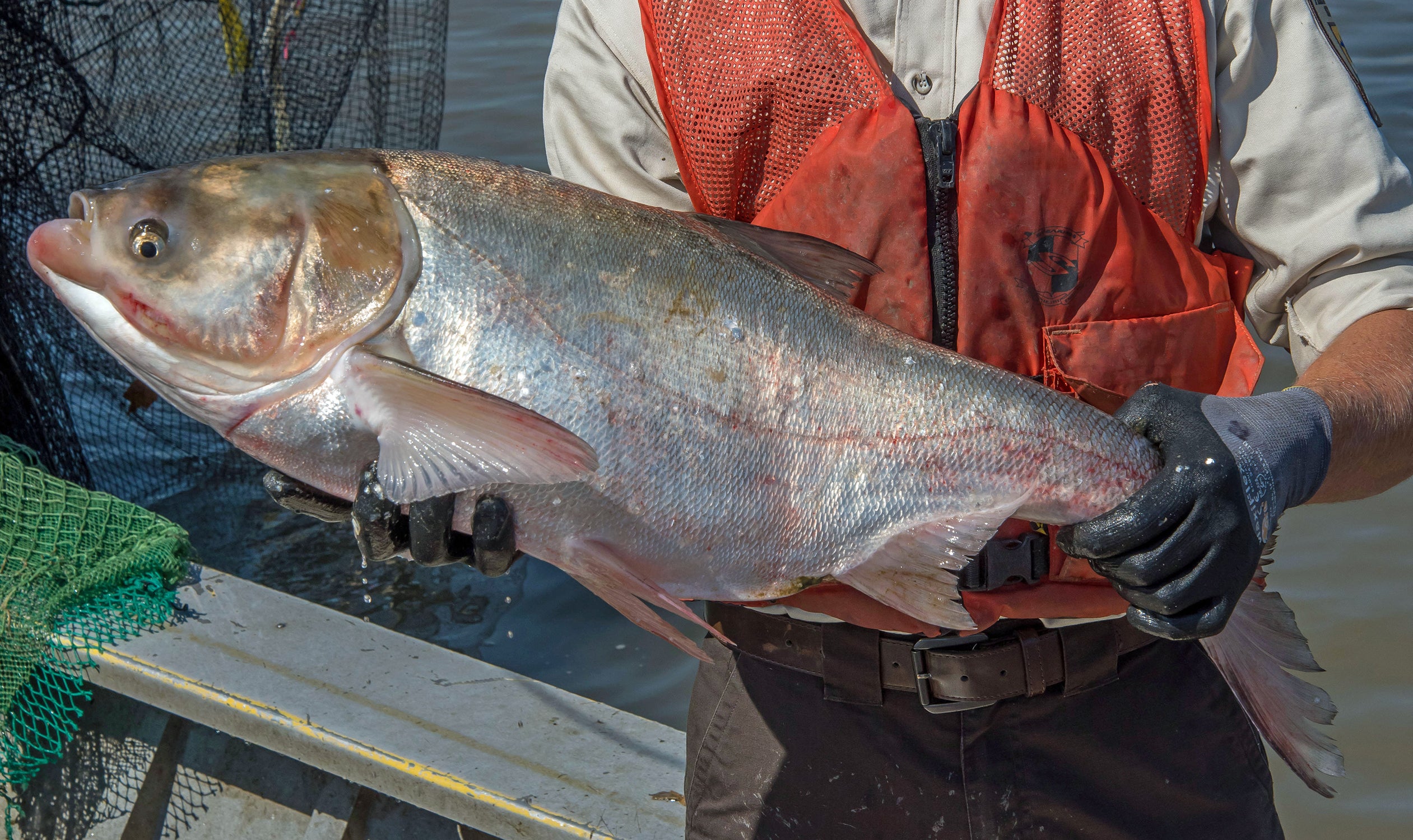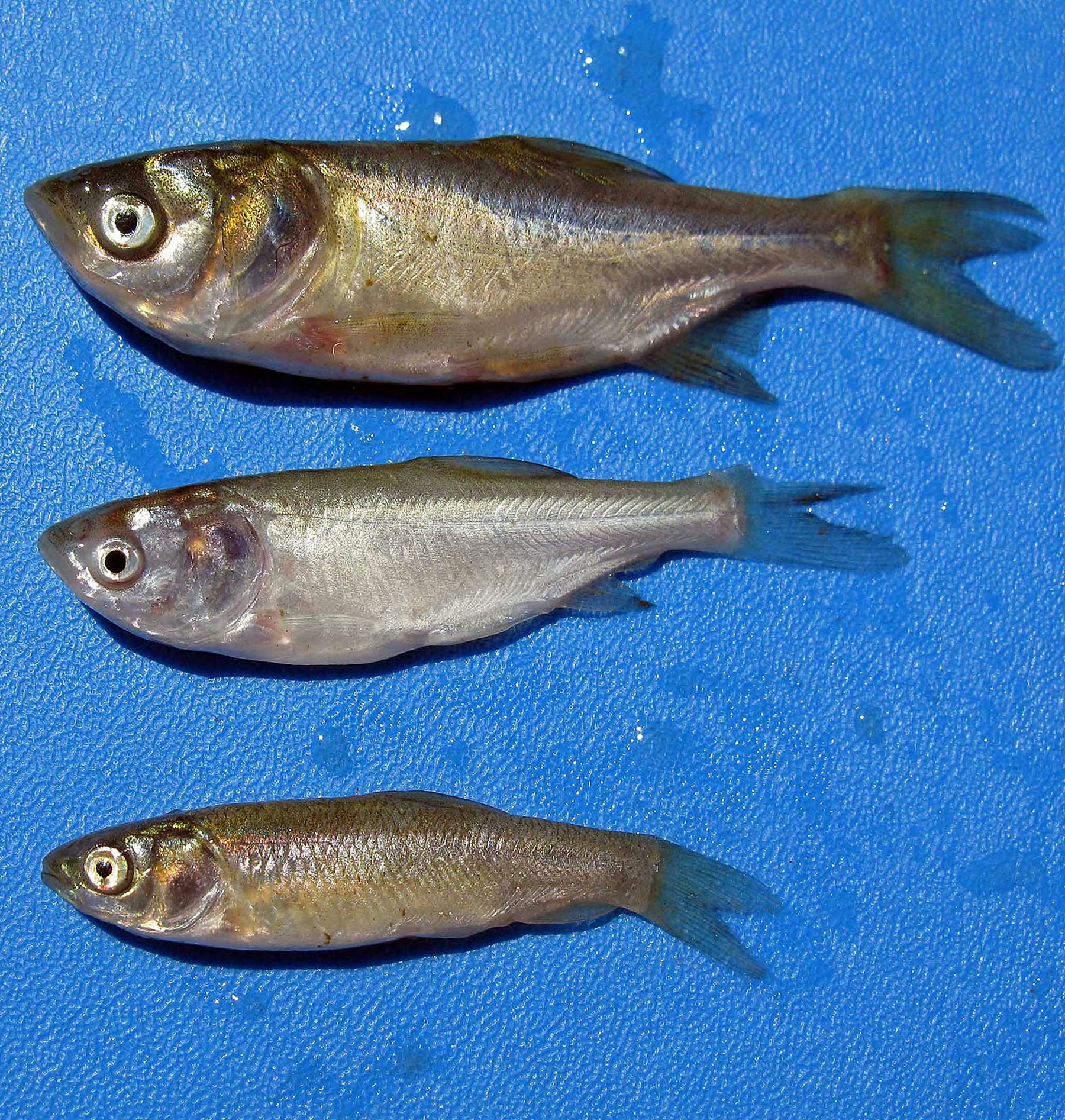By DAVID RAINER, Alabama Department of Conservation and Natural Resources
Unwanted guests can sometimes show up during the holiday season, but they almost always go home at some point. Unfortunately, the Alabama Wildlife and Freshwater Fisheries (WFF) Division got word recently that an unwanted fish species has invaded Alabama waters, and Fisheries Section Chief Nick Nichols is afraid the silver carp wants to make the Tennessee River home.
If you’ve spent any time on the internet checking out Facebook or YouTube videos, it’s likely you’ve encountered the shocking videos of the silver carp jumping like crazy, slamming into boats and passengers. Some people in those videos try to make dealing with this invasive species a game, but Nichols said nothing about silver carp is a game.
“They’re like the feral hogs of the water,” Nichols said. “At least, silver carp are as big a threat.”
In the same way feral hogs outcompete native wildlife for food and habitat resources, when silver carp become established in an area, they interrupt the natural food chain and native species end up devastated.
Nichols said four species of carp, known as Asian carp, have been released in the U.S. Those species include silver carp, bighead carp, grass carp (white amur) and black carp. Of those, the silver carp and black carp are believed to be the greatest immediate threats to Alabama’s aquatic resources. Anglers and bowfishermen can report sightings, but gillnetting is the only way to catch any significant number of carp.
Many people with ponds or lakes are familiar with grass carp, which were introduced into the U.S. in the 1960s to control aquatic vegetation. Nichols said there is no evidence to date that grass carp have adversely impacted aquatic ecosystems in Alabama waters.
The bighead carp came to the states in the 1970s. The bighead is a filter feeder that collects primarily zooplankton for sustenance. Nichols said bighead can weigh 80 pounds or more.
The black carp could prove to be a potentially devastating invasive species because of its food preferences, Nichols said.
“The black carp is a species that very much worries us,” he said. “This species looks very much like a grass carp. They were accidentally brought into the country with loads of grass carp because they look so much alike. The problem is that black carp feed almost exclusively on snails and mollusks.
“If you look at Alabama, Tennessee and Kentucky, we’re states with a huge biodiversity of aquatic mollusks, both snails and mussels. Some of these are species of conservation concern. The big concern for us, if the black carp become established in some of our systems, is that they could have a big impact on these mollusks that are already in trouble.”
Now we get to the worst news regarding these non-native carp species.
“The species that has everybody jumping, no pun intended, is the silver carp,” Nichols said. “If you Google silver carp, you will see images and videos of these clouds of jumping fish. Those are silver carp. Bighead carp don’t jump that much. Grass carp will jump but nothing like the silvers.
“The silver carp is also a filter feeder. It filters not only zooplankton but also phytoplankton, the microscopic plants. So they’re feeding right at the bottom of the food chain. By doing so, they’re competing with every other fish species in that body of water for the food supply. If they’re cropping off that zooplankton, that’s taking food out of the mouths of the native species, like the shad and bluegills.”
Another problem with silver carp is they don’t disperse but stay in large schools, which can overwhelm some systems.
“Once the silver carp establish a heavy population in an area, they literally eat themselves out of house and home,” Nichols said. “There won’t be anything left but silver carp.”








